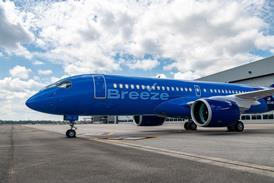Following the death in August of Sir Frank Whittle at the age of 89, it is only appropriate that Farnborough ‘96 should host a memorial to the inventor of the jet engine.
As aviation historians know, it was the Germans who first flew a jet aircraft in 1939, the British Air Ministry of the day having scoffed at the inventor's ideas when he had presented them nine years earlier.
Sir Frank, as a serving RAF officer, ‘patriotically' gave his patent to the country and then saw it sold to the Americans for $3 million.
He received a miserly, to say the least, one-off payment of £100,000 ($156,000). Needless to say, he was bitter about the treatment he received. "Disgusted, he retired to live in America" was how one obituary writer expressed it last month.
But of course the significance of the invention was such that his name has been etched in the annals of aviation history.
Sixteen years after the original invention, he was knighted for this achievement and a discovery that literally changed the face of history.
A spokesman for Rolls-Royce described him as "...one of the great geniuses of our time who changed the course of the 20th century as few men have done".
A permanent memorial, from which the Farnborough display is taken, is now housed at the Midland Air Museum in Coventry, Sir Frank's birthplace.
The stand, at Hall 4/B1A, is temporary home to one of Sir Frank Whittle's own engines.
The Power Jets W.2/700, Military Centrifugal Turbojet, was his last and most powerful design. It powered the Gloster E/28/39, Britain's first jet plane.
The exhibition also has a potted history of the man and some original black and white footage of his flights.
Surrounded, as it is, by examples of the very latest engines, components and computer-aided technology designed for the next millennium, it provides a fascinating perspective on the huge technological advances that have been made in the later part of this century.
Source: Flight Daily News




















